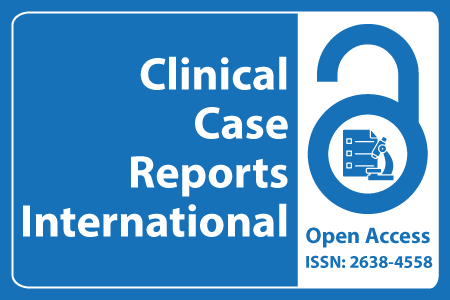
Journal Basic Info
- Impact Factor: 0.285**
- H-Index: 6
- ISSN: 2638-4558
- DOI: 10.25107/2638-4558
Major Scope
- Epidemiology
- Genetics
- Surgical
- Leukemia
- Hepatology
- Autism
- Transplantation Medicine
- Infectious Disease
Abstract
Citation: Clin Case Rep Int. 2018;2(1):1038.DOI: 10.25107/2638-4558.1038
Wheezing Disorders in Childhood
Silva-Estrada J, Reyna-Figueroa J, Wakida-Kusunoki G, Limón-Rojas A and Campos-Romero F
Department of Pediatrics, Hospital Central Sur Alta Especialidad, Mexico
Department of Medical Education and Research, Hospital Central Sur Alta Especialidad, Mexico
Department of Pediatrics, Hospital Central Sur Alta Especialidad, Mexico 4 General Directorate, Hospital Central Sur Alta Especialidad, Mexico
Department of Allergy and Clinical Immmunology, Hospital Central Sur Alta Especialidad, Mexico
*Correspondance to: Freya Helena Campos Romero
PDF Full Text Case Report | Open Access
Abstract:
Children can present wheezing episodes very early on life. Among pediatric population this is a very common respiratory symptom of can evolve into severe life-endangering episodes. Wheeze can be found in all pediatric age groups; however, infants and preschoolers are mostly affected. The appropriate characterization and management of this higher risk group is crucial to improve quality of life. At least one third of children under 5 years are affected and nearly 30% of wheezing children will experience complete remission of symptoms before 6 years of age [1], thus making wheezing a different respiratory illness in contrast with asthma in older children and adults. As a means of finding associations between clinical features, risk factors, and clinical outcomes, several wheezing phenotypes are based on prospective birth cohorts have been described. These population studies have improved understanding of epidemiology and pathophysiology of wheezing, allowing for the creation of asthma predictive indices that help distinguish those children with episodes of wheeze who will develop asthma in later childhood. Numerous viruses are implicated in the pathophysiology of wheezing and are proposed as one of the main triggers for acute episodes during early childhood.
Keywords:
Wheezing, Children; Episodes; Asthma; Virus
Cite the Article:
Silva-Estrada J, Reyna-Figueroa J, Wakida-Kusunoki G, Limón-Rojas A, Campos-Romero F. Wheezing Disorders in Childhood. Clin Case Rep Int. 2018; 2: 1038.













